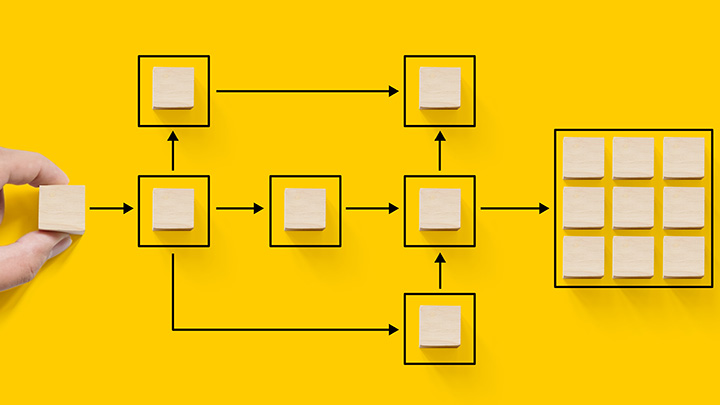
Logic models in evaluation
In this blog post, Maartje Kletter, Research Associate in the REVAL Rapid Evaluation Team at The University of Manchester, discusses using logic models within current evaluations.
In all our current evaluations we are using a logic model to hypothesise how evaluation outcomes can be achieved, to explain our findings as well as to integrate data. A logic model is nothing more than a visual presentation of how the programme that is being evaluated could lead to impact.
There are many online resources regarding what logic models are and how to develop them. Logic models are very flexible and can be adapted based on findings as well as input from PPIE advisory boards.
Most of our logic models consist of six elements:
- Inputs – what goes into the health service;
- Activities – what activities are undertaken as part of the health service;
- Outputs – What are the direct outputs of the activities;
- Outcomes – Intermediate outcomes as effect of the outputs;
- Impact – long-term outcomes as effect of outcomes;
- Context – Wider contextual factors that may impact the service and its outcomes.
Inputs/resources > Activities > Outputs > Outcomes > Impact > Context
How logic models are developed
Logic models can be developed from scratch, based on findings in the scoping phase, but they can also be adapted based on existing models.
For example, for our T1DE service evaluation, which regards an integrated care service, we developed the logic model based on an existing one for integrated care services. The identified logic model was too detailed for our purposes, but we were able to use the wider categories that were described.
How we use logic models
We use logic models throughout our evaluation. For example, during initial data analysis logic models can be used to identify potential gaps in data, where we hypothesised an activity leading to a certain outcome but cannot identify data for this.
Additionally, they can be used to integrate findings and can be particularly handy to integrate findings of various types of data. In the T1DE model, one of the anticipated outputs would be acceptance of the service by staff members as well as service users. We aim to collect both qualitative (interviews with staff and service users) as well as quantitative data (staff survey) on this topic.
Presenting data
Logic models are a nice way to present various types of data collected as part of the service evaluation. They can help explain to those commissioning the evaluations how the health service is anticipated to lead to certain outputs, outcomes, and impacts. This can help identify outcomes for future larger evaluations, as it can highlight various important factors that need to be present to achieve outcomes.
Furthermore, by including contextual factors in the logic models the wider contextual influences can be described easily. Finally, a lot of academic output can be complex, but logic models allow us to summarise complex data into a clear overview.



0 Comments